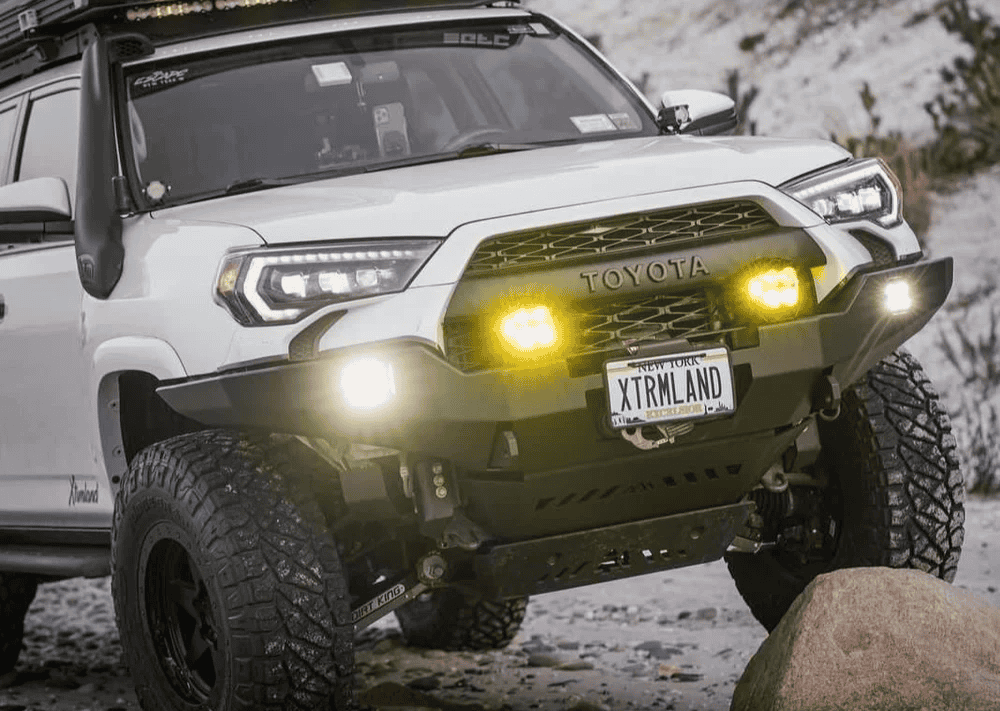Overland Vehicles

A roof rack for truck bed duty starts with load rating. Static capacity covers parked loads like rooftop tents, while dynamic capacity governs safe support while driving over washboard or freeway joints. Match these ratings to your real gear, then add a margin for water, tools, and recovery equipment that tend to creep in over time.
Height matters. The lower the rack, the better the handling and fuel economy. Taller systems clear bed cargo, spare tires, or a truck bed roof platform, but amplify wind resistance and garage conflicts. Check total height with your tent or storage boxes mounted, then measure your home garage and parking structures you use often.
Wind noise and drag can turn a great system into a chore. Look for fairings, rounded crossbars, and tight panel gaps that cut buffeting. Aerodynamic crossbars also reduce vibration that can loosen hardware over time. In coastal Southern California, stainless fasteners and coated aluminum help resist corrosion from salt laden air.
Material choices drive longevity. Aluminum resists rust and saves weight, while steel excels in point loads and abuse from rough trails. A truck bed cage rack often uses steel uprights for durability and lower flex. For mixed beach to desert use, consider aluminum crossbars with sealed steel towers to blend strength and corrosion resistance.
An overland truck cap does more than cover gear. The best caps for rack systems include reinforced tracks or internal frames that spread loads across the bed rails and cap shell. That structure keeps glass aligned and doors sealing when a tent, awning, and full water can rack live up top.
Ventilation and dust control are critical in Southern California deserts. Pair filtered vents with positive pressure fans to limit silt that sneaks into drawers and cases under the cap. If you run a truck bed roof platform, ensure the cap’s windows still open for airflow and camp cooking.
Access defines day to day usability. Side hatch caps make kitchen and tools reachable without climbing. Combine that with lower crossbar spacing and you can slide bins out under a rack without unloading. A well planned truck bed rack system places awning mounts where they clear cap doors and tailgate swings.
Lighting and power need forethought. Route cables inside the cap frame when possible, avoid roof penetrations that can leak, and include switched circuits for camp lights on both sides. If you use a truck bed cage rack, add protected channels for wires so nothing snags when you load bikes or fuel cans.
The right overland truck bed builders in Southern California will audit your use case before suggesting hardware. Ask about dynamic testing, water sealing, and how they align racks to cap structure rather than only to thin sheet metal. Skilled shops can fabricate adapters that preserve strength and avoid stress points near windows.
Look for clean welds, smooth powder coat, and hardware that is serviceable with common tools. A good truck bed rack system uses anti seize on stainless fasteners, torque specs you can reference later, and thread locking where vibration is expected. For long trips, modularity matters so you can swap a tent for a cargo tray without starting over.
Ask for a plan that accounts for axle weights. Roof loads affect handling and braking more than most expect. The best designs keep mass as low and as centered as possible. If you need a tall tower for bikes or a spare, balance it with lighter cargo toward the cab and heavier items in the bed.
Confirm the posted static and dynamic ratings and whether they assume even load distribution. A truck bed cage rack often carries concentrated loads, so request gussets or thicker wall uprights if you carry a moto stand or recovery boards up top.
Bed rail mounts preserve paint and are easier to service, while track mounts spread loads across longer sections. If your cap uses an internal frame, ensure the rack towers land where that frame is strongest.
Seals around doors, pass through grommets for wiring, and drain paths for sudden downpours keep gear dry from Santa Ana winds to mountain squalls. Small details make big differences on real trips.
If you want a build team that starts with your route map instead of a parts list, explore our overland rigs. OZK Customs designs integrated caps and racks that stay quiet on the freeway and solid on rocky climbs, then we hand off each rig with a clear walkthrough.
Need fabrication that ties into your specific canopy or bed tracks without rattles or leaks, and finishes that survive salt air near the coast and heat in the desert, see our custom overland upfit. Our team builds around how you camp, haul, and sleep, from low profile crossbars to full platforms.
Curious about process, communication, and support, read why choose OZK Customs. We focus on fit, function, and a quiet cabin, so your trip feels effortless from the first mile.
Tell us what you carry and where you go. We will map a rack and cap plan that keeps weight low, gear reachable, and your truck composed on any surface. Submit the form and let us design a clean, durable system that is ready for Southern California roads and beyond.
Ready for a purpose built overland bed system that actually fits your life? Tell us how you travel and what you carry. OZK Customs designs and installs integrated caps, racks, and mounts that survive heat, salt, and washboard. Share a few details in the form and our team will map a clean, quiet, and durable setup for your next trip.
ADDRESS:
6159 E Huntsville Rd, Fayetteville, AR 72701
PHONE:
(479) 326-9200
EMAIL:
info@ozkvans.com